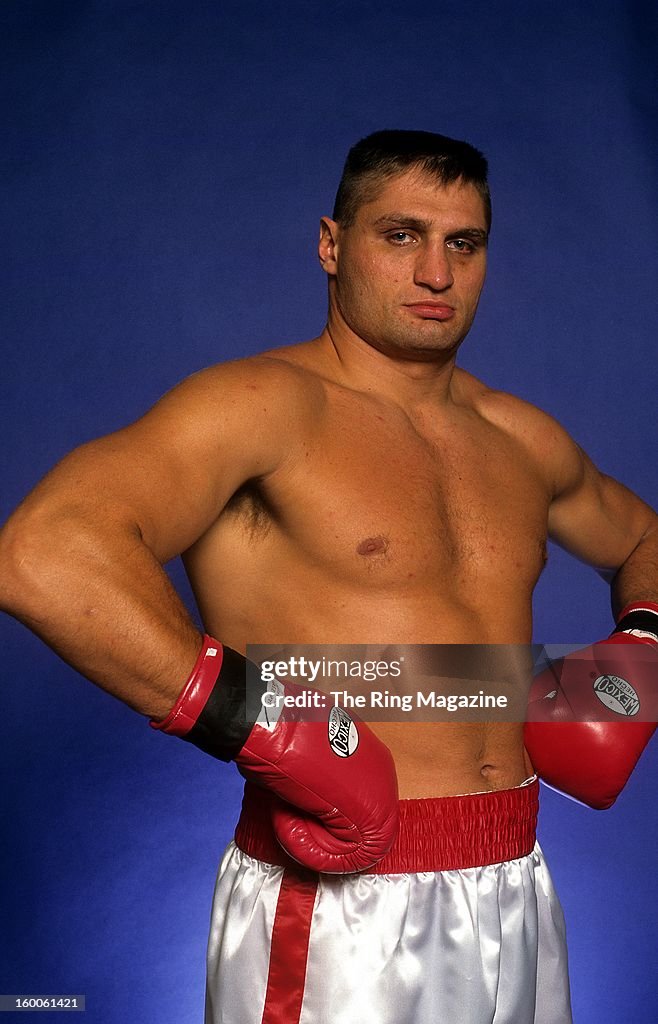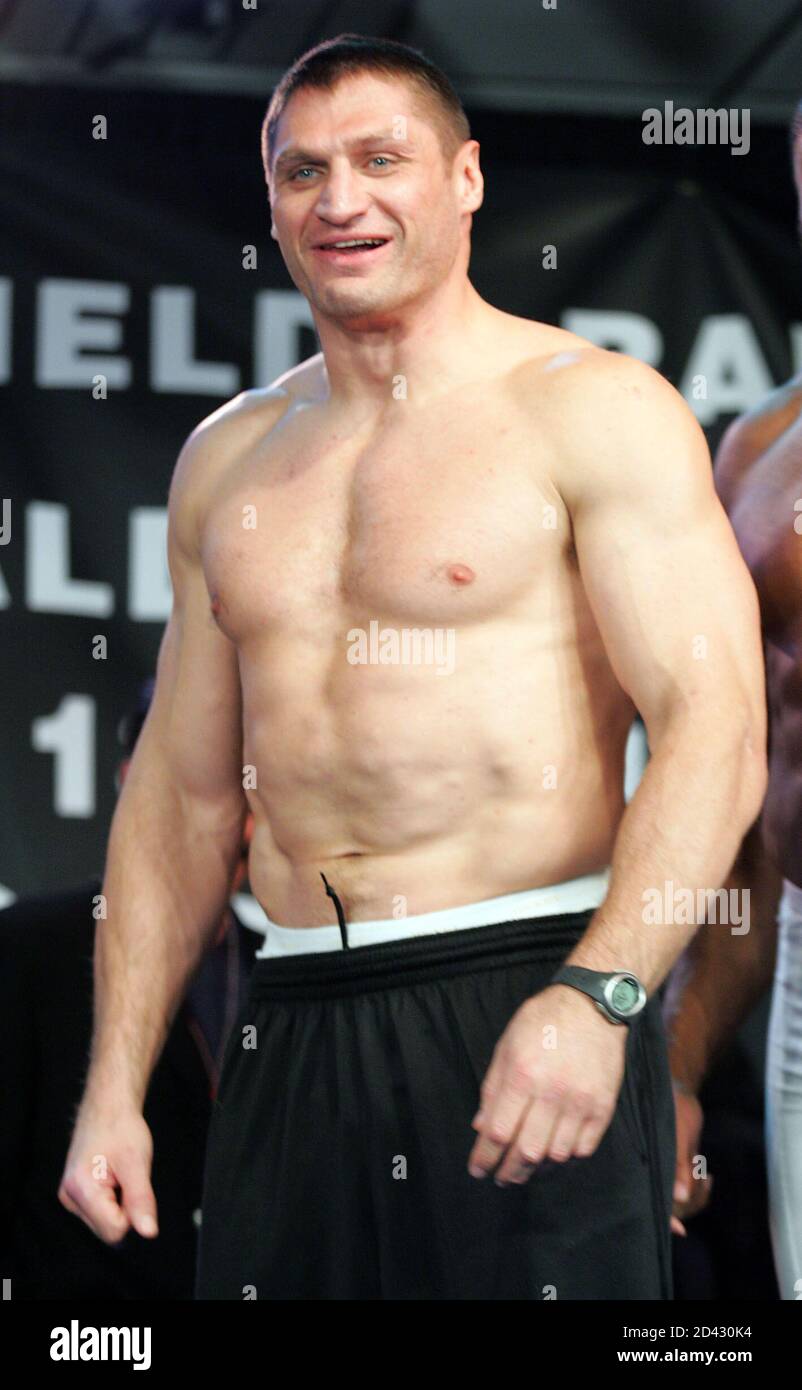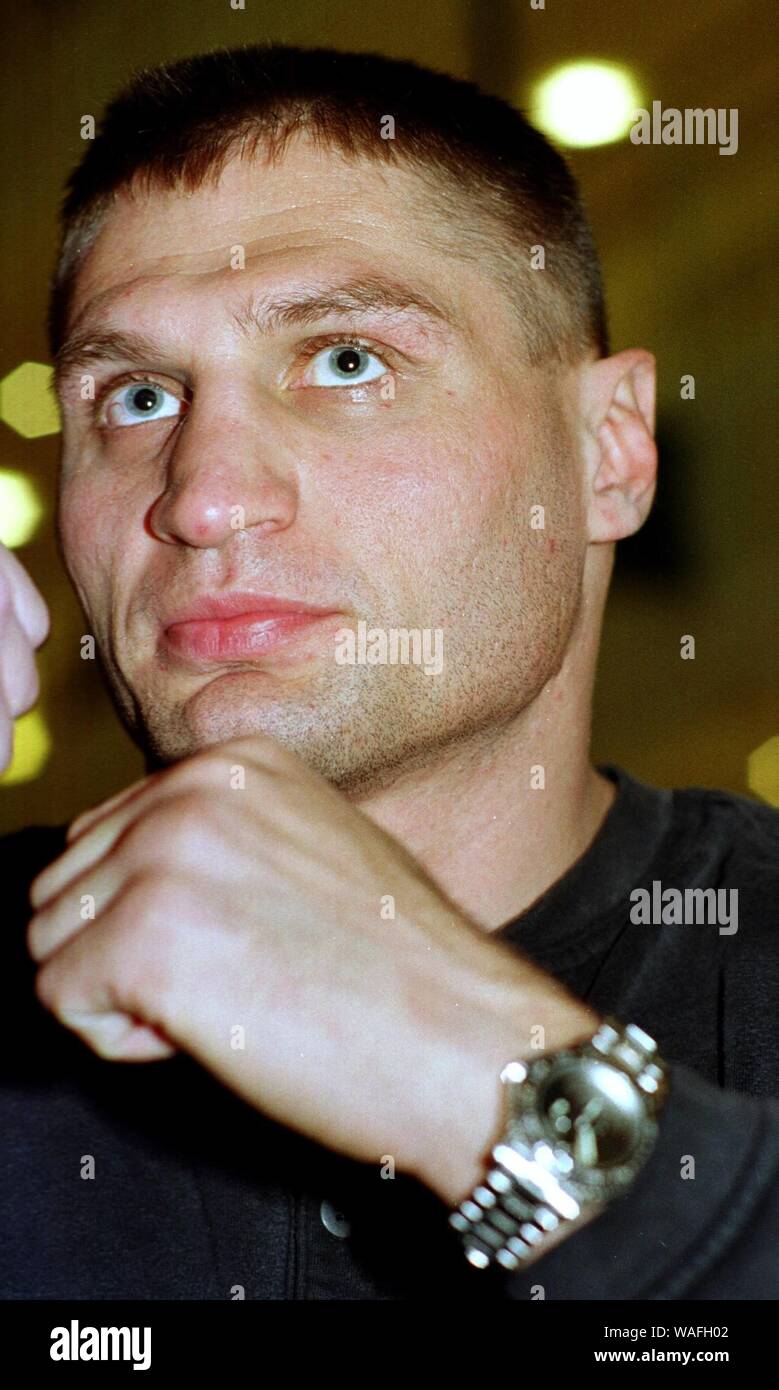Andrew Golota: The Untold Story Of Boxing's Enigma + Facts
Is boxing a sport of skill or brute force? For Andrew Golota, the answer is a complex blend of both, a story etched in power punches, controversial moments, and ultimately, unfulfilled potential.
Andrew Golota, the Polish-American former professional boxer, remains a figure of fascination and debate within the boxing world. Competing from 1992 to 2009, he carved out a career defined by raw power, an aggressive approach, and moments of brilliance often overshadowed by self-inflicted wounds. Twice the WBO Inter-Continental Heavyweight titleholder, Golota's journey was marked by three unsuccessful challenges for the coveted world heavyweight championships. He was a fighter who could electrify a crowd with a single punch, yet whose career was perpetually dogged by controversy, leaving many to wonder what might have been.
Born in Warsaw, Poland, Golota's introduction to boxing occurred at the age of 12, igniting a passion that would propel him onto the world stage. His amateur career saw him rise through the ranks, culminating in a Polish Junior National Championship in 1984. He proudly represented Poland at the 1988 Summer Olympics in Seoul, showcasing his talent on an international platform, eventually reaching the quarterfinals. These early successes hinted at the promise of a future star, a boxer destined for greatness.
- Is Riley Green And Ella Langleys Relationship Solid All About It
- Alaina Marie Mathers Eminems Daughter Her Inspiring Life Now
The year 1992 marked Golota's transition to the professional realm, and he wasted no time in asserting his dominance within the heavyweight division. A string of victories, marked by devastating knockouts, quickly established him as a force to be reckoned with. He amassed an impressive record, winning his first 24 fights, with a staggering 23 of those wins coming by way of knockout. This explosive start solidified his reputation as a dangerous power puncher, a fighter capable of ending a bout with a single, well-placed blow.
| Attribute | Details |
|---|---|
| Name | Andrew Golota |
| Born | January 5, 1968 |
| Birth Place | Warsaw, Poland |
| Nationality | Polish-American |
| Weight Class | Heavyweight |
| Stance | Orthodox |
| Reach | 82 in (208 cm) |
| Professional Record | 41 wins (33 by knockout), 9 losses, 1 draw |
| Notable Titles | WBO Inter-Continental Heavyweight Title (Twice) |
| Years Active | 1992 - 2009 |
| Key Opponents | Riddick Bowe, Lennox Lewis, Mike Tyson |
| Amateur Highlights | Polish Junior National Champion (1984), 1988 Seoul Olympics Quarterfinalist |
| Reference | BoxRec |
The year 1996 brought Golota his first shot at a major title, a WBO Heavyweight title clash against Riddick Bowe. The fight was a spectacle of brutal exchanges and dramatic shifts in momentum, but it ultimately ended in controversy. In the seventh round, the referee called a halt to the bout, disqualifying Golota for repeated low blows. The decision sparked a riot in Madison Square Garden, underscoring the intense emotions Golota's fights often elicited. The controversial finish fueled debates about Golota's intentions and the fairness of the ruling, further cementing his image as a polarizing figure.
Golota's pursuit of a world title continued, leading him to challenge Lennox Lewis for the WBC Heavyweight title on two separate occasions, in 1997 and 2000. Both fights, however, ended in disappointment for the Polish-American boxer, with Lewis securing knockout victories. These defeats highlighted Golota's vulnerability against elite opponents, revealing flaws in his technique and mental fortitude that would ultimately prevent him from reaching the very top of the heavyweight division.
- All American The Truth About Who Is Spencer Jamess Real Dad Exposed
- The Unforgettable Happy Days Cast Where Are They Now
Despite the controversies and setbacks, Andrew Golota's legacy remains that of a fighter possessing undeniable power and a remarkable capacity for resilience. He retired from boxing in 2009, leaving behind a record of 41 wins (33 by knockout), 9 losses, and 1 draw. While he never achieved his ultimate goal of capturing a world heavyweight title, his career was filled with memorable moments, showcasing both his immense talent and his undeniable flaws. He was a fighter who could captivate and frustrate in equal measure, a complex and compelling figure whose impact on the heavyweight division continues to be debated.
Andrew Golota, a Polish-American boxer, is known for his exceptional punching power and aggressive style. Here are five key aspects that explore various dimensions of his career:
- Power Puncher: Golota possessed devastating punching power, with 33 of his 41 wins coming by knockout.
- Controversial Career: Golota's career was marked by controversies, including disqualification for repeated low blows and fights marred by headbutts.
- Resilience: Despite setbacks and controversies, Golota showed remarkable resilience, returning to the ring after each adversity.
- Unfulfilled Potential: Golota never fully realized his potential, losing three world heavyweight title fights.
- Legacy: Golota is remembered as a formidable opponent and a symbol of both power and vulnerability in the boxing world.
These aspects highlight Golota's strengths and weaknesses, as well as his impact on the heavyweight division. His power and resilience made him a dangerous opponent, but his controversies and unfulfilled potential left a lasting mark on his legacy.
Andrew Golota's exceptional punching power was a defining characteristic of his boxing career. With 33 of his 41 wins coming by knockout, he established himself as one of the most dangerous heavyweights of his era. It wasn't merely about landing a punch; it was about the sheer force he generated, a force that could instantly change the course of a fight.
Golota's punching power was evident from his early fights. He won his first 24 professional fights, 23 of them by knockout. His devastating left hook and powerful right cross proved too much for many opponents to withstand. Opponents often found themselves on the canvas, unable to answer the bell, victims of Golota's explosive power. These early displays of dominance quickly earned him a reputation as a knockout artist, a fighter to be feared.
Golota's punching power was not only a physical attribute but also a psychological weapon. Opponents were often intimidated by his reputation and entered the ring with a sense of fear. This fear often led to tentative and cautious performances, giving Golota an advantage. Knowing that a single mistake could lead to a sudden and devastating knockout, his opponents often fought defensively, allowing Golota to control the pace and dictate the terms of the fight.
Golota's punching power played a crucial role in his success as a boxer. It allowed him to overcome superior technique and skill on several occasions. However, it also led to his downfall in some fights, as he relied too heavily on his power and neglected other aspects of boxing. While his raw power could often carry him to victory, against more polished and strategic opponents, his reliance on brute force proved to be a liability.
Andrew Golota's career was marked by a series of controversies that overshadowed his achievements in the ring. These controversies included disqualification for repeated low blows and fights marred by headbutts. These incidents not only marred his record but also tarnished his image, leading many to question his sportsmanship and control.
- Disqualification for Low Blows: Golota was disqualified in two high-profile fights for repeated low blows. In 1996, he was disqualified in the seventh round of a WBO Heavyweight title fight against Riddick Bowe. In 2000, he was disqualified in the ninth round of a WBC Heavyweight title fight against Lennox Lewis. These disqualifications were particularly damaging, as they occurred in crucial title fights, denying him the opportunity to claim a world championship.
- Headbutts: Golota was also involved in several fights that were marred by headbutts. In 1998, he headbutted Lou Savarese, causing a deep cut over Savarese's eye. In 2002, he headbutted Mike Tyson, causing a cut over Tyson's eye. These incidents further fueled the perception of Golota as a dirty fighter, someone willing to bend the rules to gain an advantage.
Golota's controversial behavior had a significant impact on his career. He was fined and suspended by boxing commissions, and his reputation was damaged. Despite his talent and punching power, Golota was never able to fully overcome the stigma of his controversies. These sanctions not only affected his earning potential but also made it more difficult for him to secure high-profile fights, ultimately hindering his career progression.
Andrew Golota's resilience was a defining characteristic of his boxing career. Despite suffering setbacks and controversies, he always managed to return to the ring and continue fighting. This unwavering determination and refusal to give up, even in the face of adversity, earned him the respect of many within the boxing community.
Golota's resilience was first tested in 1996 when he was disqualified in a WBO Heavyweight title fight against Riddick Bowe for repeated low blows. This was a major setback for Golota, but he refused to give up. He returned to the ring and won his next two fights. Demonstrating his mental fortitude, he channeled his disappointment and frustration into training, preparing himself for future challenges.
In 2000, Golota was again disqualified in a WBC Heavyweight title fight against Lennox Lewis, this time for headbutting. This was another major setback, but Golota once again showed his resilience by returning to the ring and winning his next two fights. Despite the criticism and negative publicity, he remained focused on his goals, refusing to let these incidents define his career.
Golota's resilience was also tested outside the ring. In 2002, he was involved in a car accident that seriously injured his wife. Despite this tragedy, Golota returned to the ring just six months later. This act of courage and determination, balancing his personal struggles with his professional aspirations, further exemplified his resilience as both a fighter and an individual.
Golota's resilience is an inspiration to anyone who has ever faced adversity. It shows that no matter how difficult life may seem, it is always possible to overcome challenges and achieve success. His ability to bounce back from setbacks, both inside and outside the ring, serves as a testament to the power of perseverance and the human spirit.
Andrew Golota possessed exceptional punching power and resilience, but he never fully realized his potential as a boxer. He lost three world heavyweight title fights, all by knockout, and failed to reach the pinnacle of the sport. While he displayed flashes of brilliance, a combination of factors ultimately prevented him from achieving his ultimate goal.
- Technical Limitations: Golota relied heavily on his punching power and often neglected other aspects of boxing, such as footwork and defense. This made him vulnerable to better-rounded opponents who could outbox him and exploit his weaknesses. His lack of refinement in these areas often left him exposed, making him an easier target for skilled boxers.
- Mental Fragility: Golota had a tendency to lose focus and composure in big fights. He was prone to making mistakes and getting into brawls, which often led to his downfall. This mental vulnerability often manifested in critical moments, costing him victories that were within his grasp.
- Controversies: Golota's career was marred by controversies, including disqualification for repeated low blows and headbutts. These controversies damaged his reputation and made it difficult for him to secure big fights. The negative publicity surrounding these incidents created obstacles that hindered his career progression.
- Lack of Discipline: Golota struggled with weight issues and often failed to adhere to strict training regimens. This lack of discipline hindered his development as a boxer and prevented him from reaching his full potential. His inability to maintain a consistent training schedule and manage his weight ultimately affected his performance in the ring.
Despite his unfulfilled potential, Golota remains a respected figure in the boxing world. His exceptional punching power and resilience made him a formidable opponent, and his career is a cautionary tale about the importance of technical skill, mental fortitude, and discipline in achieving success in boxing. He serves as a reminder that talent alone is not enough; it must be coupled with dedication, discipline, and mental strength to reach the highest levels of achievement.
Andrew Golota's legacy as a formidable opponent and a symbol of both power and vulnerability is deeply intertwined with his unique fighting style and controversial career. He remains a complex and polarizing figure, remembered for his explosive power and his tendency to self-destruct at crucial moments.
Golota possessed exceptional punching power, which made him a dangerous threat to any opponent. He was known for his devastating left hook and powerful right cross, which often resulted in spectacular knockouts. However, Golota's vulnerability stemmed from his technical limitations and mental fragility. While he could unleash devastating blows, he often struggled against opponents who could exploit his weaknesses in footwork and defense.
Golota relied heavily on his punching power and often neglected other aspects of boxing, such as footwork and defense. This made him vulnerable to better-rounded opponents who could outbox him and exploit his weaknesses. Additionally, Golota had a tendency to lose focus and composure in big fights, which led to mistakes and brawls. These lapses in concentration often proved costly, turning potential victories into disappointing defeats.
Despite his unfulfilled potential, Golota's exceptional punching power and resilience made him a formidable opponent. His legacy as a symbol of both power and vulnerability is a reminder of the complex and often contradictory nature of boxing. He represents the raw potential that can be both a blessing and a curse, a testament to the importance of harnessing talent with discipline and mental fortitude.
This section addresses frequently asked questions about Andrew Golota, providing concise and informative answers to common concerns and misconceptions.
Question 1: Why is Andrew Golota known as a controversial figure in boxing?
Andrew Golota's career was marked by several controversies, including disqualification for repeated low blows and fights marred by headbutts. These controversies overshadowed his achievements in the ring and damaged his reputation. The incidents often sparked outrage and debate, contributing to the perception of Golota as a fighter who struggled to control his emotions and actions within the ring.
Question 2: Despite his punching power, why did Andrew Golota never win a world heavyweight title?
Golota's unfulfilled potential can be attributed to several factors, including technical limitations, mental fragility, and controversies. He relied heavily on his punching power and neglected other aspects of boxing, such as footwork and defense. Additionally, his tendency to lose focus and composure in big fights led to mistakes and brawls, preventing him from reaching the pinnacle of the sport. His inability to maintain focus and composure under pressure ultimately hindered his chances of claiming a world title.
In conclusion, Andrew Golota's legacy as a formidable opponent and a symbol of both power and vulnerability is inextricably linked to his unique fighting style and controversial career. He remains a subject of fascination and debate, a reminder of the complexities and challenges inherent in the sport of boxing.
Andrew Golota's boxing career was a complex and often contradictory journey marked by exceptional punching power, resilience, and controversies. His devastating left hook and powerful right cross made him a formidable opponent, but his technical limitations and mental fragility prevented him from reaching the pinnacle of the sport. He was a fighter who could electrify a crowd with a single punch, yet whose career was perpetually dogged by controversy.
Golota's legacy as a symbol of both power and vulnerability is a reminder of the complexities and challenges of boxing. Despite his unfulfilled potential, he remains a respected figure in the boxing world, and his career serves as a cautionary tale about the importance of technical skill, mental fortitude, and discipline in achieving success. He represents the raw talent that can be both a blessing and a curse, a testament to the importance of harnessing ability with dedication and mental strength.
- Stevie Ray Vaughan The Life And Music Of An Early Legend
- Discovering Doobie Brother Michael Mcdonald The Soulful Legend

Andrew Golota poses for a portrait in 1996 in New York. The Ring

Golota hires stock photography and images Alamy

Andrew Golota High Resolution Stock Photography and Images Alamy